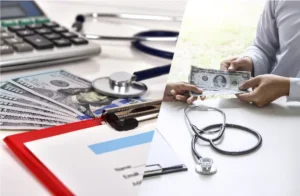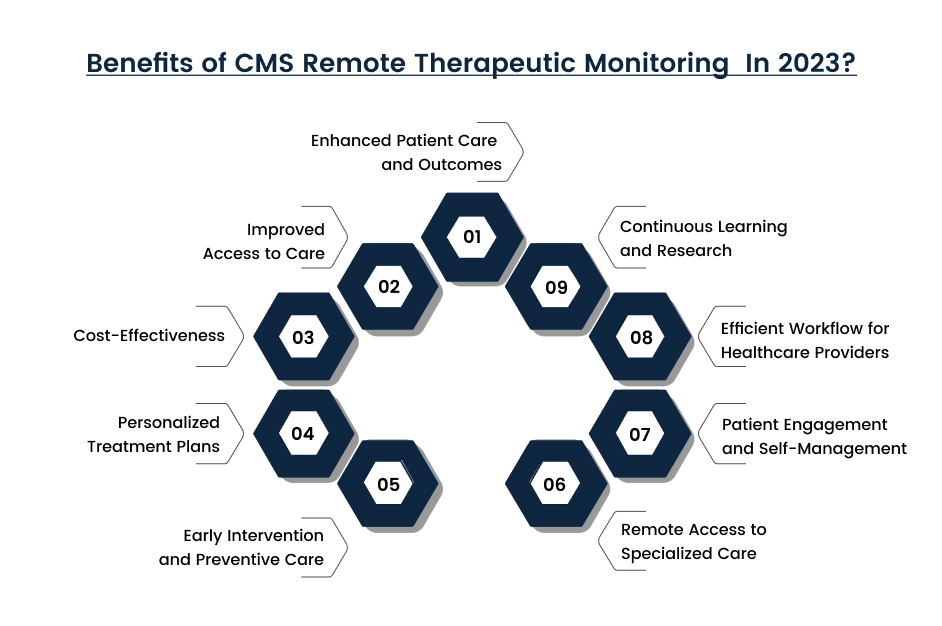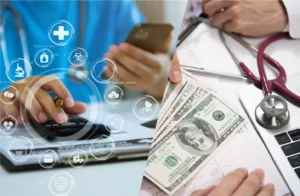
The Provider’s Guide to Thriving in a Value-Based Reimbursement Era
The Provider’s Guide to Thriving in a Value-Based Reimbursement Era For years, healthcare providers have navigated the complexities of a system that often prioritizes quantity

Since the outbreak of covid-19, health sectors have been progressing in technological advancement and are looking for more and more adherence to patient home health programs.
With CMS giving more and more importance to Remote patient monitoring systems in the wake of covid-19, it is important to understand what RTM means and how it is beneficial.
In this blog, we will delve into the meaning of RTM and how it can be effectively used for better healthcare outcomes.
As the name implies, RTM is an abbreviation for Remote Therapeutic Monitoring. It specifically refers to the use of remote monitoring devices such as electronic patches or apps that help monitor a patient’s condition, track symptoms, and provide constant feedback to patients and healthcare professionals.
When we talk about RTM meaning in medical terms, it refers to the remote monitoring of therapies prescribed for patients. This includes non-intrusive methods such as telemedicine, mobile health technologies and connected medical devices.
The aim of RTM is to help improve patient outcomes by tracking their health on a regular basis, providing personalized treatment plans and reminders, reducing hospital visits or stays, and ultimately improving the quality of care.
RTM specially deals with health conditions, specifically for respiratory and musculoskeletal systems. RTM allows healthcare providers to use digital technologies for capturing therapeutic data to track a patient’s health and progress, leading to better clinical decisions.
As of now, you may be thinking that RPM is similar to RTM, but they are two different things. The core concept of Remote Patient Monitoring (RPM) and RTM is the same, i.e., to monitor a patient’s health condition using digital technologies remotely. But there is still a slight difference between the two:
RPM is a general term that focuses on the patient’s vital signs, such as breathing, heart rate, temperature, etc. In contrast, RTM specifically deals with symptoms related to health conditions such as respiratory illness or musculoskeletal issues.
With CMS introducing more & more reimbursement policies for RTM, physical therapists are using it as a tool to bridge the gap between clinical and home-based care. This allows them to provide better care in an efficient and cost-effective manner.
Before the introduction of remote therapeutic monitoring, most of the physical therapy services were done through office visits. Still, now, with RTM, physical therapists can assess the patient’s progress between sessions remotely and receive more real-time patient feedback about their conditions.
RTM has advanced the services for providing quality care by introducing additional data points like therapists can measure the pain level and make sure that patients adhere to prescribed medications.

Remote Therapeutic Monitoring (RTM) in 2023 offers significant patient care and outcomes benefits. With the ability to monitor patients remotely, healthcare providers can track vital signs, medication adherence, and symptoms in real time. This constant monitoring allows for early detection of potential issues, enabling timely interventions and adjustments to treatment plans. As a result, patients experience improved care and better health outcomes.
RTM in 2023 breaks down barriers to healthcare access, particularly for patients in remote or underserved areas. Patients no longer need to travel long distances for frequent in-person visits. Instead, they can receive continuous care and support from the comfort of their homes, using wearable devices and telemedicine platforms. This increased accessibility enhances healthcare equity and reduces disparities in care.
For both patients and healthcare systems, RTM offers cost-effectiveness. Patients can save on transportation costs and time by reducing the need for frequent hospital or clinic visits. Additionally, healthcare facilities can optimize resources and focus on more critical cases, as routine monitoring and follow-ups can be done remotely.
RTM in 2023 allows healthcare providers to gather a wealth of data on patient’s health status, behaviors, and responses to treatment. This data-driven approach enables the development of personalized treatment plans tailored to each patient’s unique needs and progress. As a result, patients experience more effective and targeted interventions.
With continuous monitoring through RTM, healthcare providers can identify potential health issues and trends early on. This early detection facilitates proactive interventions and preventive measures, reducing the likelihood of complications and hospitalizations. Timely management of conditions leads to better long-term health outcomes and reduced healthcare costs.
Patients with complex or rare conditions often struggle to find specialized healthcare services locally. RTM in 2023, bridges this gap by allowing patients to access expert care from remote healthcare providers. Specialists can remotely review patient data, offer consultations, and provide valuable insights, improving the quality of care for patients with unique medical needs.
RTM empowers patients to become more engaged in their own health management. Through the data provided by remote monitoring devices, patients can gain insights into their progress and make informed decisions about their lifestyle and treatment choices. This increased engagement promotes patient responsibility for their health and fosters better self-management practices.
For healthcare providers, RTM streamlines workflow and patient management. Real-time data transmission and remote monitoring enable timely interventions without the need for frequent office visits. Healthcare providers can prioritize high-risk patients, allocate resources more efficiently, and deliver more organized and effective care.
RTM generates vast amounts of patient data, which can be anonymized and used for research purposes. This data can help researchers and healthcare institutions gain valuable insights into disease patterns, treatment efficacy, and patient outcomes. The continuous flow of data contributes to evidence-based practice and fosters ongoing learning in the medical field.
As the healthcare industry continues to evolve and adapt to changing needs, Remote Therapeutic Monitoring (RTM) in 2023 is a valuable tool for improving access to care, optimizing resources, and enhancing patient outcomes. With its ability to provide continuous monitoring and personalized treatment plans, RTM can revolutionize the ways in which providers deliver care and patients manage their health.
If you want to know more about remote therapeutic monitoring and how this can aid in providing valuable care, We can help you achieve an upper hand and get started with it.

The Provider’s Guide to Thriving in a Value-Based Reimbursement Era For years, healthcare providers have navigated the complexities of a system that often prioritizes quantity

Capitation Payments in Healthcare – Why It is Important to Understand? Since the enactment of the Affordable Care Act (ACA), there has been a rapid
Talk to an Expert Now